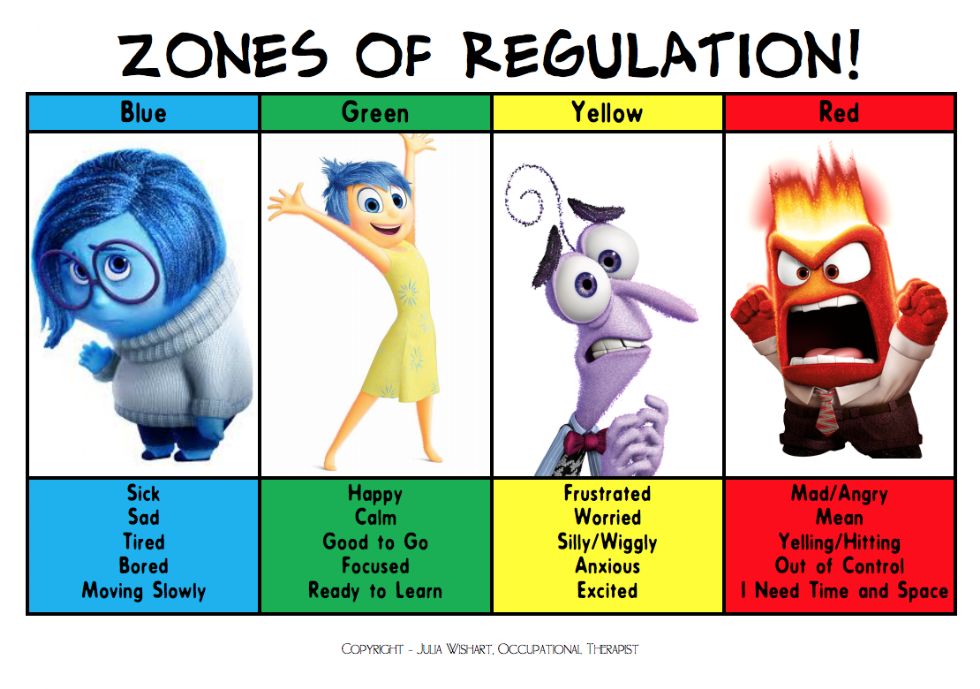Zones of Regulation
What are the zones?
The Zones framework provides strategies to teach students to become more aware of and independent in controlling their emotions and impulses, manage their sensory needs, and improve their ability to problem-solve conflicts.
By addressing underlying deficits in emotional and sensory regulation, executive functioning, and social cognition, the framework is designed to help move students towards independent regulation.
The Zones of Regulation incorporate SocialThinking® (www.socialthinking.com) concepts and numerous visuals to teach students to identify their feelings/level of alertness, understand how their behaviour impacts those around them, and learn what tools they can use to manage their feelings and states.
THE FOUR ZONES: Our feelings & states determine our zone

The Red Zone is used to describe extremely heightened states of alertness and intense emotions. A person may be elated or experience anger, rage, devastation, or terror when in the Red Zone.
The Yellow Zone is also used to describe a heightened state of alertness and elevated emotions. However, one has more control when one is in the Yellow Zone. A person may be experiencing stress, frustration, anxiety, excitement, silliness, wiggles, or nervousness when in the Yellow Zone.
The Green Zone is used to describe a calm state of alertness. A person may be described as happy, focused, content, or ready to learn when in the Green Zone. This is the zone where optimal learning occurs.
The Blue Zone is used to describe low states of alertness and down feelings, such as when one feels sad, tired, sick, or bored.
The Zones can be compared to traffic signs:
- When given a green light or in the Green Zone, one is “good to go”.
- A yellow sign means be aware or take caution, which applies to the Yellow Zone.
- A red light or stop sign means stop, and when one is in the Red Zone, this is often the case.
- The Blue Zone can be compared to the rest area signs where one goes to rest or re-energise.
All the zones are natural to experience, but the framework focusses on teaching students how to recognise and manage their Zone based on the environment, its demands, and the people around them. For example, when playing in the playground or in an active/competitive game, students often experience a heightened internal state such as silliness or excitement and are in the Yellow Zone, but it may not need to be managed. However, if the environment is changed to the library where there are different expectations than in the playground, students may still be in the Yellow Zone, but have to manage it differently, so their behaviour meets the expectations of the library setting.
